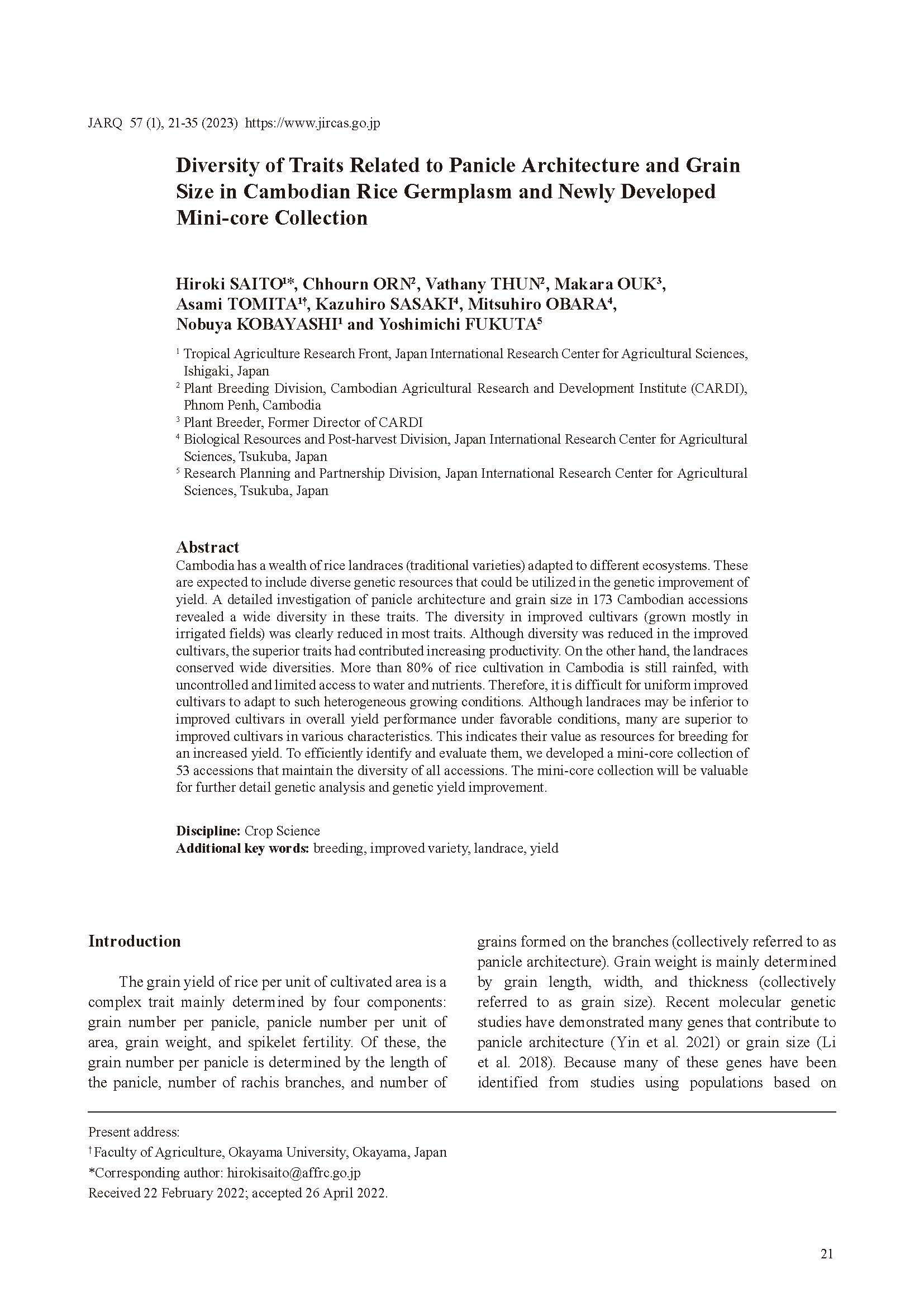Cambodia has a wealth of rice landraces (traditional varieties) adapted to different ecosystems. These are expected to include diverse genetic resources that could be utilized in the genetic improvement of yield. A detailed investigation of panicle architecture and grain size in 173 Cambodian accessions revealed a wide diversity in these traits. The diversity in improved cultivars (grown mostly in irrigated fields) was clearly reduced in most traits. Although diversity was reduced in the improved cultivars, the superior traits had contributed increasing productivity. On the other hand, the landraces conserved wide diversities. More than 80% of rice cultivation in Cambodia is still rainfed, with uncontrolled and limited access to water and nutrients. Therefore, it is difficult for uniform improved cultivars to adapt to such heterogeneous growing conditions. Although landraces may be inferior to improved cultivars in overall yield performance under favorable conditions, many are superior to improved cultivars in various characteristics. This indicates their value as resources for breeding for an increased yield. To efficiently identify and evaluate them, we developed a mini-core collection of 53 accessions that maintain the diversity of all accessions. The mini-core collection will be valuable for further detail genetic analysis and genetic yield improvement.

